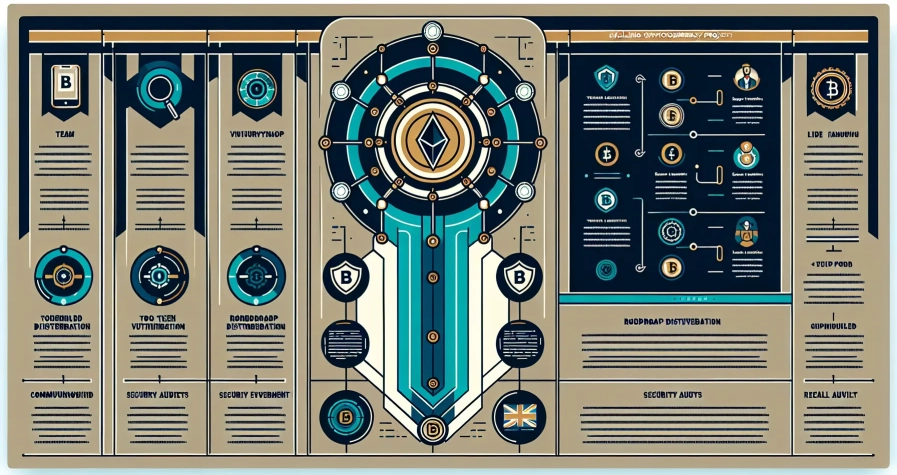Blockchain technology has fundamentally reshaped how individuals and businesses move value across the globe. Yet with dozens of networks now operational, each touting unique features, speed advantages, and cost structures, the question of which blockchain to use for transfers has become genuinely complex. Choosing the wrong network can mean unnecessarily high fees, frustrating delays, or compatibility headaches that ripple through subsequent transactions. Understanding the landscape of blockchain networks and their distinctive characteristics is no longer optional for anyone engaged in digital asset transfers. This guide breaks down the critical considerations, compares leading networks, and provides practical frameworks for matching blockchain infrastructure to specific transfer requirements.
Key Takeaways
- Choosing the best blockchain network for transfers depends on matching network characteristics to your specific requirements, including transaction speed, fees, and use case.
- Networks like Stellar and Nano offer near-zero transaction fees, making them ideal for small frequent transfers and cross-border payments.
- Transaction speed varies dramatically across blockchains—Stellar confirms in 3–5 seconds whilst Solana achieves sub-second finality, compared to Ethereum’s slower base layer.
- Security and network maturity matter significantly for large transfers, with established networks like Ethereum offering battle-tested reliability despite higher fees.
- Always verify total costs including exchange withdrawal fees and bridge charges, not just network transaction fees, when selecting a blockchain for transfers.
- EVM-compatible networks like Arbitrum and Polygon provide low-cost alternatives to Ethereum whilst maintaining ecosystem compatibility and security guarantees.
Understanding Blockchain Networks and Transfer Types

Blockchain networks differ substantially in their fundamental architecture, consensus mechanisms, and operational capabilities. These technical distinctions translate directly into real-world performance characteristics that affect every transfer.
Transfer types themselves vary considerably. Wallet-to-wallet transactions represent the most straightforward category, moving cryptocurrency from one personal wallet to another on the same network. Exchange transfers involve depositing or withdrawing assets between personal wallets and centralised or decentralised exchanges. Cross-border payments utilise blockchain rails to move value internationally, often converting between fiat currencies at endpoints. Smart contract deployments and interactions represent another category entirely, with distinct computational requirements beyond simple value transfers.
Each blockchain processes these transfer types differently. Some networks excel at basic value transfers but struggle with complex smart contract execution. Others prioritise programmability whilst sacrificing transaction throughput or cost efficiency. The consensus mechanism, whether Proof of Work, Proof of Stake, or more specialised protocols, fundamentally determines how quickly transactions achieve finality and what costs validators require to process them.
Network maturity matters as well. Established networks benefit from extensive security auditing, broader wallet support, and deeper liquidity pools on exchanges. Newer networks might offer superior technical specifications but face adoption hurdles and smaller ecosystems. Understanding these distinctions forms the foundation for making informed network selection decisions tailored to specific transfer requirements rather than relying on generic recommendations or marketing claims.
Key Factors to Consider When Selecting a Network
Several critical factors separate genuinely suitable blockchain networks from poor choices for specific transfer scenarios.
Transaction Speed and Confirmation Times
Transaction speed represents how quickly a blockchain network processes and confirms transfers. This metric varies dramatically across networks and directly affects user experience, particularly for time-sensitive transfers.
Networks utilising advanced consensus mechanisms process transactions at vastly different rates. Stellar’s Stellar Consensus Protocol enables transaction confirmation in approximately 3-5 seconds, making it exceptionally well-suited for cross-border payments and scenarios requiring rapid settlement. Blockchain-based settlements generally complete in under three minutes compared to traditional SWIFT transfers requiring three to five days, a stark illustration of the efficiency gains available.
Solana processes thousands of transactions per second with confirmation times typically under one second, positioning it favourably for high-frequency trading environments and DeFi applications where speed translates to competitive advantage. Ethereum, by contrast, processes roughly 15-30 transactions per second on its base layer, though Layer-2 solutions dramatically improve these figures.
For most transfer purposes, finality matters more than raw speed. Some networks achieve extremely fast initial confirmations but require additional time before transactions become truly irreversible. Understanding the difference between initial confirmation and absolute finality prevents premature assumptions about transfer completion.
Transaction Fees and Cost Efficiency
Transaction fees significantly impact the overall economics of blockchain transfers, particularly for frequent or smaller-value transactions.
Fee structures vary enormously across networks. Nano (XNO) charges zero transaction fees whilst delivering near-instantaneous processing, a combination that makes it compelling for micropayments and frequent small transfers. Stellar imposes a minimum fee of approximately £0.0000041 per transaction, rendering cost essentially negligible even for high-volume transfer scenarios. Solana processes transactions at around £0.00025, whilst Litecoin charges £0.03–0.04 per transaction.
For exchange transfers specifically, Stellar (£0.0000041), Algorand (£0.00024), and Nano (zero fees) prove most economical. These networks allow users to move assets between wallets and exchanges without meaningful cost impact, which matters considerably for trading strategies involving frequent rebalancing or arbitrage opportunities.
Ethereum’s base layer fees fluctuate with network congestion, sometimes reaching £20-50 during peak demand periods. But, Layer-2 solutions like Arbitrum and Optimism reduce these costs by an order of magnitude whilst maintaining Ethereum security guarantees.
Cost efficiency shouldn’t be evaluated in isolation. A network with minimal fees but poor exchange support might require an additional transfer step, eventually costing more than a slightly pricier but better-integrated alternative.
Security and Network Reliability
Security and reliability represent non-negotiable requirements for any blockchain used for meaningful value transfers.
Network security depends fundamentally on consensus mechanisms and economic incentives. Proof of Stake networks like Ethereum secure themselves through validator deposits that would be forfeited (slashed) if validators acted maliciously. Solana employs Proof of History combined with Proof of Stake, creating a verifiable record of transaction ordering that validators can reference without extensive communication overhead.
Network maturity correlates with security confidence. Established blockchains have survived years of attack attempts and economic stress tests, revealing vulnerabilities that developers later addressed. Newer networks, regardless of theoretical security properties, haven’t faced equivalent real-world challenges.
Reliability encompasses uptime and consistency. Some networks experience occasional disruptions, Solana, for instance, has faced several network outages during periods of extreme congestion. Whilst these incidents prompted infrastructure improvements, they illustrate that even technically advanced networks can encounter operational challenges.
Validator decentralisation affects security substantially. Networks with thousands of independent validators prove far more resistant to coordinated attacks or censorship than those dominated by a handful of entities. Reviewing validator distribution and network Nakamoto coefficients (the minimum number of validators required to compromise the network) provides insight into genuine decentralisation versus theoretical claims.
Token and Asset Compatibility
Compatibility considerations extend beyond whether a network technically supports certain tokens to encompass practical accessibility through exchanges, wallets, and services.
Major exchanges including Coinbase and Binance support Stellar, Algorand, Solana, and Nano, ensuring broader accessibility for users who need to convert between cryptocurrencies and fiat currencies or trade across different assets. Networks without major exchange support require users to navigate decentralised exchanges or bridge protocols, adding complexity and potential failure points.
Wallet compatibility matters equally. Metamask’s dominance in Ethereum and EVM-compatible networks means users already possess the infrastructure for Ethereum, Polygon, Arbitrum, and Binance Smart Chain transfers. Networks requiring specialised wallets face adoption friction, particularly for less technically sophisticated users.
Cross-chain bridge availability determines whether assets can move between networks efficiently. Well-established bridges connecting Ethereum to Polygon or Arbitrum enable relatively seamless asset migration. Bridges to less common networks might offer limited asset support or present elevated security risks, bridge exploits have resulted in hundreds of millions in losses over recent years.
Token standards play a role as well. ERC-20 tokens on Ethereum can typically move across EVM-compatible networks with minimal friction. Networks using entirely different token standards require conversion steps that introduce costs and complexity.
Comparing Popular Blockchain Networks for Transfers
Understanding how specific networks stack up against one another clarifies which options suit particular transfer scenarios.
Ethereum and Layer-2 Solutions
Ethereum remains the most established smart contract platform, with unmatched ecosystem depth, developer activity, and institutional adoption. For transfers involving ERC-20 tokens or interactions with Ethereum-based DeFi protocols, Ethereum represents the native and often most liquid option.
But, Ethereum’s base layer suffers from congestion-driven fee spikes that render small transfers economically impractical during busy periods. Layer-2 solutions directly address this limitation.
Arbitrum provides EVM-compatible scaling with transaction throughput exceeding 40,000 TPS whilst maintaining Ethereum security guarantees through optimistic rollup technology. Transactions cost a fraction of base-layer Ethereum fees, typically under £1 even during peak periods, whilst settlement eventually anchors to Ethereum’s highly secure base layer.
Optimism offers similar benefits through comparable technology, with growing adoption among major DeFi protocols. Both networks allow users to deposit assets from Ethereum, conduct numerous low-cost transactions on Layer-2, and withdraw back to Ethereum when needed.
The primary trade-off involves withdrawal delays. Optimistic rollups require a challenge period (typically seven days) before withdrawals to Ethereum finalise, though third-party bridges can accelerate this process for a fee. For users planning to keep assets within Layer-2 ecosystems, this limitation rarely presents practical problems.
Binance Smart Chain and Alternative Networks
Binance Smart Chain (BSC) emerged as an EVM-compatible alternative prioritising low fees and high throughput over maximal decentralisation. Transaction costs typically range from £0.10-0.50, significantly below Ethereum base layer fees whilst maintaining compatibility with Ethereum tooling and wallets.
BSC’s validator set remains relatively centralised compared to Ethereum, with approximately 40 validators, many connected to Binance itself. This centralisation enables faster consensus and lower fees but represents a security and censorship-resistance trade-off that users should understand.
For transfers involving Binance-listed tokens or for users primarily trading on Binance, BSC offers genuine advantages. Deposits and withdrawals between Binance and BSC wallets process quickly and cheaply, whilst the network supports a substantial DeFi ecosystem.
Avalanche provides another EVM-compatible alternative with a more decentralised validator set and subnet architecture enabling customised blockchain deployments. Fees remain low (typically under £1) whilst transaction finality occurs in under two seconds, faster than Ethereum or BSC.
Fantom utilises a directed acyclic graph (DAG) structure rather than traditional blockchain architecture, achieving fast finality and low fees. Its ecosystem, whilst smaller than Ethereum or BSC, includes notable DeFi protocols and bridges to major networks.
Solana, Polygon, and Emerging Options
Solana distinguishes itself through exceptional raw performance, processing thousands of transactions per second at costs around £0.00025 per transaction. This combination makes Solana particularly suitable for high-frequency trading, NFT minting and transfers, and DeFi applications where transaction costs meaningfully impact strategy profitability.
The network’s Proof of History mechanism creates a cryptographic timestamp for transactions, enabling validators to process transactions without extensive coordination overhead. Solana’s performance comes with hardware requirements that some argue compromise decentralisation, validators require more powerful and expensive equipment than many competing networks.
Polygon operates as an Ethereum sidechain with its own Proof of Stake consensus whilst maintaining regular checkpoints to Ethereum for enhanced security. Transactions cost mere fractions of a penny and confirm in roughly two seconds. Polygon has achieved substantial adoption, with major brands and applications deploying on the network.
NEAR Protocol targets developers building scalable decentralised applications through its sharding architecture, which allows the network to handle numerous simultaneous transactions across multiple shards. Transaction costs hover around £0.0006, whilst the network emphasises usability improvements like human-readable account names rather than hexadecimal addresses.
Algorand employs pure Proof of Stake with immediate finality, once a block is added, it’s irreversible. Transaction costs remain minimal at approximately £0.00024, and the network processes about 1,000 transactions per second. Algorand’s focus on institutional adoption and regulatory compliance positions it favourably for entities requiring these characteristics.
For cross-border payment scenarios specifically, Stellar excels through design choices explicitly targeting this use case. The network facilitates international transfers and financial inclusivity with proven adoption by MoneyGram, Circle, and Flutterwave. Built-in decentralised exchange functionality and native multi-currency support streamline cross-border transactions that would require multiple steps on other networks.
Matching Network Choice to Your Transfer Needs
Generic recommendations rarely serve specific situations well. Optimal network selection depends on understanding one’s particular transfer requirements.
Small Frequent Transfers Versus Large One-Time Transactions
Transfer patterns fundamentally shape which network characteristics matter most.
For small frequent transfers, such as micropayments, regular DCA purchases, or gaming-related transactions, transaction fees dominate the decision calculus. Networks with zero or near-zero fees like Nano, Stellar, or Algorand prevent fees from consuming a meaningful percentage of transferred value. A £5 transfer on a network charging £2 fees loses 40% to costs, whilst the same transfer on Stellar costs essentially nothing.
Speed matters considerably for frequent transfers as well. Waiting 10-15 minutes for Bitcoin confirmations becomes genuinely frustrating when conducting multiple transactions daily. Networks with sub-second finality dramatically improve user experience for high-frequency scenarios.
Large one-time transactions operate under different economics. A £50,000 transfer can economically absorb even £20-30 in fees, a tiny fraction of transferred value. For such transactions, security, liquidity, and exchange support typically outweigh cost considerations. Using a mature, highly secure network with deep liquidity proves worth the fee premium.
Confirmation finality matters more for large transfers. Waiting an additional few minutes for absolute irreversibility provides peace of mind that justifies modest speed trade-offs. Networks that achieve genuine finality rather than merely probabilistic confirmation reduce anxiety around high-value transfers.
Exchange support becomes critical for large transfers that might convert to fiat or other assets. Transferring a substantial sum to a network poorly supported by major exchanges creates liquidity challenges and potentially unfavourable conversion rates that outweigh any fee savings.
Cross-Border and International Considerations
Cross-border transfers introduce additional requirements beyond simple domestic wallet-to-wallet transactions.
Speed transforms from convenience to necessity for international payments. Traditional banking rails requiring multiple days for international transfers create genuine cash flow problems for businesses and meaningful inconvenience for individuals. Blockchain networks settling in minutes provide substantial practical advantages.
Regulatory considerations vary by jurisdiction. Some networks have achieved greater regulatory clarity in specific regions, reducing compliance uncertainty for businesses processing international payments. Stellar’s partnerships with regulated financial institutions and focus on compliance position it favourably for entities requiring regulatory confidence.
Currency pair availability matters for transfers eventually converting to local fiat currencies. Networks with built-in decentralised exchange functionality or strong stablecoin ecosystems simplify the conversion process. Stellar’s native support for multiple currency pairs and integration with fiat on/off-ramps streamlines end-to-end international transfers.
Time zone considerations affect real-time transaction monitoring and support availability. Blockchain networks operate 24/7, but exchange support, customer service, and some bridging services maintain business hours. For truly urgent international transfers, understanding which support resources remain available at transaction time proves valuable.
Partner network effects influence practical utility. A blockchain network might technically excel at cross-border payments, but without adoption by payment processors, exchanges, or financial institutions in the destination country, theoretical advantages fail to materialise into practical benefits.
Common Mistakes to Avoid When Choosing a Network
Several recurring errors undermine network selection decisions, often resulting in unnecessary costs or complications.
Prioritising lowest fees without considering total cost represents a frequent mistake. A network might charge minimal transaction fees but require bridge transfers, specialised exchange listings, or multiple conversion steps that accumulate costs exceeding a slightly pricier but better-integrated alternative. Total economic impact matters more than any single fee component.
Ignoring withdrawal and deposit fees at exchanges creates unpleasant surprises. Some exchanges charge substantial fees for deposits or withdrawals on specific networks regardless of the network’s native transaction costs. Reviewing exchange fee schedules before selecting a transfer network prevents discovering £10-20 withdrawal fees after assets have already been deposited.
Overlooking confirmation time differences leads to frustration. Seeing a transaction as “pending” for 10-30 minutes when expecting instant confirmation creates unnecessary anxiety. Understanding realistic confirmation timelines for chosen networks prevents premature concern about delayed transactions.
Assuming all EVM-compatible networks are interchangeable causes confusion. Whilst networks like Ethereum, Binance Smart Chain, Polygon, and Arbitrum share wallet compatibility and similar interfaces, they remain distinct networks. Sending tokens to the correct network address matters, tokens sent to an Ethereum address on the wrong network might become irretrievable without technical recovery efforts.
Neglecting to verify token contract addresses enables costly errors. Scam tokens with names identical to legitimate projects exist on most networks. Verifying official contract addresses through project websites or reputable sources like CoinGecko prevents accidentally purchasing worthless impostor tokens.
Choosing networks based solely on marketing claims rather than verified performance leads to disappointment. Transaction-per-second figures often represent theoretical maximums under ideal conditions rather than sustained real-world throughput. Independent blockchain explorers and analytics platforms provide actual performance data for informed decisions.
Failing to consider network effect and ecosystem maturity creates practical limitations. A technically superior network with minimal wallet support, limited exchange listings, and few integrated services proves less useful than a slightly inferior network with robust ecosystem support.
Ignoring security track records invites unnecessary risk. Networks that have experienced repeated outages, successful attacks, or bridge exploits might present unacceptable risk profiles regardless of their technical specifications or cost advantages.
Conclusion
Selecting the best blockchain network for transfers isn’t about identifying a single “winner” but rather matching network characteristics to specific requirements. Transfer frequency, transaction size, geographical considerations, and budget constraints each point towards different optimal choices.
Nano suits micropayments and scenarios where zero fees genuinely matter. Stellar excels for cross-border payments and international transfers, with proven institutional adoption validating its real-world utility. Solana addresses high-volume DeFi activity where speed and low costs enable strategies impossible on slower or pricier networks. Ethereum Layer-2 solutions like Arbitrum provide the best combination of ecosystem access, security, and reasonable costs for users already engaged with Ethereum-based applications.
Before committing to transfers on any network, evaluate security credentials through independent research rather than marketing materials. Verify exchange support for both deposit and withdrawal of specific tokens. Confirm wallet compatibility and ensure comfort with the required software. Review actual transaction costs including any bridge fees, exchange charges, or conversion spreads that might apply beyond nominal network fees.
The blockchain landscape continues evolving rapidly, with networks regularly implementing upgrades that shift competitive dynamics. Network selection shouldn’t be a one-time decision but rather an ongoing evaluation as personal needs change and networks improve. What works optimally today might be surpassed by emerging alternatives tomorrow, or might evolve to serve expanding use cases. The frameworks outlined here provide a foundation for making informed decisions now whilst remaining adaptable as the ecosystem matures.
Frequently Asked Questions
What is the cheapest blockchain network for transfers?
Nano offers zero transaction fees with near-instantaneous processing, making it the most cost-effective option. Stellar charges approximately £0.0000041 per transaction, whilst Algorand costs around £0.00024, both rendering fees negligible even for high-volume transfers.
How do I choose the best blockchain network for cross-border payments?
Stellar excels for international transfers, offering 3–5 second confirmations, minimal fees, and built-in multi-currency support. It’s designed specifically for cross-border payments with proven adoption by MoneyGram and Circle, streamlining international transactions that require multiple steps on other networks.
Which blockchain network has the fastest transaction confirmation times?
Solana processes transactions in under one second with thousands of transactions per second, making it ideal for high-frequency trading. Stellar confirms transactions in 3–5 seconds, whilst Algorand provides immediate finality once blocks are added, ensuring transactions are irreversible instantly.
Are Layer-2 solutions better than using Ethereum directly for transfers?
For most transfers, Layer-2 solutions like Arbitrum and Optimism offer superior cost efficiency, with fees under £1 versus Ethereum’s £20–50 during congestion. They maintain Ethereum’s security whilst dramatically improving throughput, though withdrawals require a seven-day challenge period.
What security risks should I consider when selecting a blockchain for large transfers?
Evaluate validator decentralisation, network maturity, and historical security track records. Established networks have survived years of attack attempts, whilst newer networks lack equivalent stress testing. Review the Nakamoto coefficient to understand how many validators could compromise the network.
Can I use any blockchain network with my existing crypto wallet?
Not all wallets support every blockchain network. Metamask works with Ethereum and EVM-compatible chains like Polygon and Binance Smart Chain, but networks using different architectures require specialised wallets. Always verify wallet compatibility before selecting a network to avoid accessibility issues.








